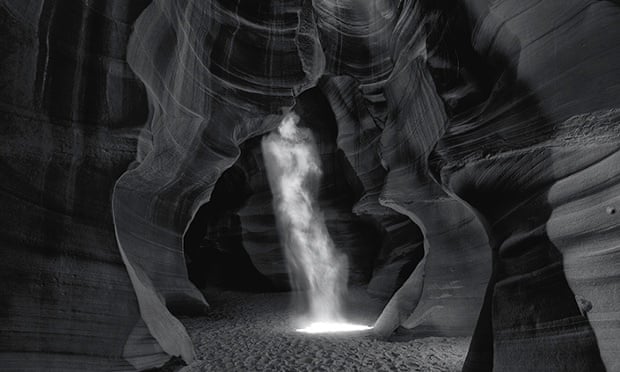Things like this just wind me up, but Johnathan Jones has made my day for writing this..
The $6.5m canyon: it's the most expensive photograph ever – but it's like a hackneyed poster in a posh hotel
Peter Lik’s hollow, cliched and tasteless black and white shot of an
Arizona canyon isn’t art – and proves that photography never will be

Photography is not an art. It is a technology. We have no excuse to ignore this obvious fact in the age of digital cameras, when the most beguiling high-definition images and effects are available to millions. My iPad can take panoramic views that are gorgeous to look at. Does that make me an artist? No, it just makes my tablet one hell of a device.
The news that landscape photographer Peter Lik has sold his picture Phantom for $6.5m (£4.1m), setting a new record for the most expensive photograph of all time, will be widely taken as proof to the contrary. In our world where money talks, the absurd inflated price that has been paid by some fool for this “fine art photograph” will be hailed as proof that photography has arrived as art.
Yet a closer look at Phantom reveals exactly the opposite. This record-setting picture typifies everything that goes wrong when photographers think they are artists. It is derivative, sentimental in its studied romanticism, and consequently in very poor taste. It looks like a posh poster you might find framed in a pretentious hotel room.
Phantom is a black-and-white shot taken in Antelope Canyon, Arizona. The fact that it is in black and white should give us pause. Today, this deliberate use of an outmoded style can only be nostalgic and affected, an “arty” special effect. We’ve all got that option in our photography software. Yeah, my pics of the Parthenon this summer looked really awesome in monochrome.
Lik’s photograph is of course beautiful in a slick way, but beauty is cheap if you point a camera at a grand phenomenon of nature. The monochrome detailing of the canyon is sculptural enough, and a shaft of sunlight penetrating its depths becomes the phantom of the title. Yet, in fact, this downward stream of light is simply a natural aspect of Antelope Canyon. Look it up online and you will find a vast range of photographs that all show the same feature. They are all just as striking as Phantom. The photographer has added nothing of any value to what was there already. Google is full of “great” pictures of this awe-inspiring natural feature.
Someone has been very foolish with their money, mistaking the picturesque for high art.
As a colour picture without any arty claims, this would be a valuable record of nature. Instead, it claims to be more than that; it aspires to be “art”. It is this ostentatious artfulness that pushes it into the realm of the false. For the artistic ambition of this picture is so very derivative from paintings that were created more than a century ago. Just like the very first “art” photographers in the Victorian age, Lik apes the classics in order to seem classic.
Phantom aims for the sublime, that sense of awe in front of nature that was described by Edmund Burke in the 18th century and taken to lavish heights by painters in the 19th. American painters especially, such as Frederic Edwin Church and Albert Bierstadt, used a heightened romantic style to express the grandeur and amazement of the American landscape. Later, Georgia O’Keeffe added a surreal dreaminess to the west’s iconography. Film-makers, above all John Ford, were influenced by the American landscape painters when they put the west on screen.
Phantom comes along in the wake of all these representations of the American landscape in art – and lazily emulates them. It is a cliche: easy on the eye, easy on the brain, hackneyed and third-hand.
If this is the most valuable “fine art photograph” in history, God help fine art photography. For this hollow and overblown creation exposes the illusion that lures us all, when we’re having a good day with a good camera – the fantasy that taking a picture is the same thing as making a work of art.


No comments:
Post a Comment